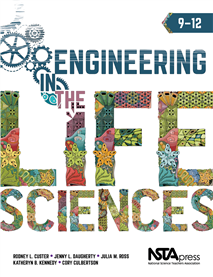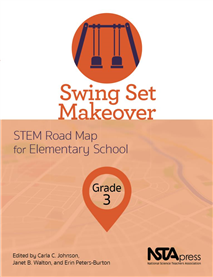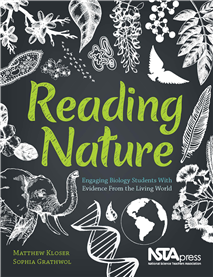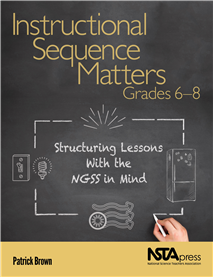All Book Chapters
Book Chapter
This chapter contains five engineering case studies. Each one presents an engaging story of how engineering was used to find a solution to a real-world problem or opportunity. The stories were chosen to span a range of science and engineering fields....
Book Chapter
Swing Set Makeover, Grade 3: STEM Road Map for Elementary School (Book sample chapter)
What if you could challenge your third graders to design a swing set that’s safe but still lots of fun? With this volume in the STEM Road Map Curriculum Series, you can!Swing Set Makeover outlines a journey that will steer your students toward auth...
Book Chapter
Technological Advances in Automobiles
In this lesson, students are introduced to and experiment with mousetrap cars and the science and industry of crash testing cars with a focus on safety improvements. Students investigate the history of technologies that have allowed cars to achieve g...
Book Chapter
In this lesson, students use the law of conservation of momentum and energy to investigate the forces and motions involved in three scenarios—a car striking a stationary object, two vehicles colliding head-on, and two vehicles colliding at an angle...
Book Chapter
In this lesson, students investigate the history of safety features in cars and apply this understanding to a question that has existed since the origination of civil society—Under what conditions should governments establish rules for safety that ...
Book Chapter
Reading Nature: Engaging Biology Students With Evidence From the Living World (Book Sample)
By making room for this book in your curriculum, you’ll have a fresh way to motivate your students to look at the living world and ask not only “Why?” but also “How do we know?” Unique in both its structure and approach, Reading Nature is a...
Book Chapter
Instructional Sequence Matters, Grades 6–8: Structuring Lessons With the NGSS in Mind (Book Sample)
Instructional Sequence Matters shows how to make simple shifts in the way you arrange and combine activities to improve student learning. It also makes it easy for you to put the NGSS into practice. After explaining why sequencing is so important, au...
Book Chapter
Engineering in the Life Sciences, 9–12 (Book Sample)
When the authors of this book took part in Project INFUSE, the National Science Foundation–funded teacher development program, they noticed something. Life science teachers were highly receptive to engineering ideas related to everything from genom...
Book Chapter
Modern Sequences of Instruction
This chapter discusses the key components of two contemporary sequences of science instruction. It presents the phases of the POE (Predict, Observe, and Explain) and 5E (Engage, Explore, Explain, Elaborate, and Evaluate) Instructional Models. The act...
Book Chapter
Content and Process Working Together
This chapter describes the construction of the Next Generation Science Standards (NGSS). The author shares some activities for you to reflect on lessons you currently use and the connection to components of the NGSS. By cultivating a way of thinkin...
Book Chapter
Investigating Change Using the Invisible Test Tube Demonstration
Chapters 6–9 share model lessons for putting the explore-before-explain mindset into practice using either a POE (Predict, Observe, and Explain) or 5E (Engage, Explore, Explain, Elaborate, and Evaluate) instructional sequence. In this chapter, the ...
Book Chapter
There’s More to Magnetism Than Certain Objects Being Attracted to Refrigerators
Chapters 6–9, share model lessons for putting the explore-before-explain mindset into practice using either a POE (Predict, Observe, and Explain) or 5E (Engage, Explore, Explain, Elaborate, and Evaluate) instructional sequence. This chapter explore...
Book Chapter
Making the Connection: Addressing Students’ Misconceptions of Circuits
Chapters 6–9 share model lessons for putting the explore-before-explain mindset into practice using either a POE (Predict, Observe, and Explain) or 5E (Engage, Explore, Explain, Elaborate, and Evaluate) instructional sequence. In this chapter, st...
Book Chapter
Chapters 6–9 share model lessons for putting the explore-before-explain mindset into practice using either a POE (Predict, Observe, and Explain) or 5E (Engage, Explore, Explain, Elaborate, and Evaluate) instructional sequence. This chapter offers a...
Book Chapter
Leadership Can Make the Difference
This chapter takes you through five key lessons to putting an explore-before-explain mindset into practice using POE (Predict, Observe, and Explain) and 5E (Engage, Explore, Explain, Elaborate, and Evaluate) instructional sequences that incorporate t...






